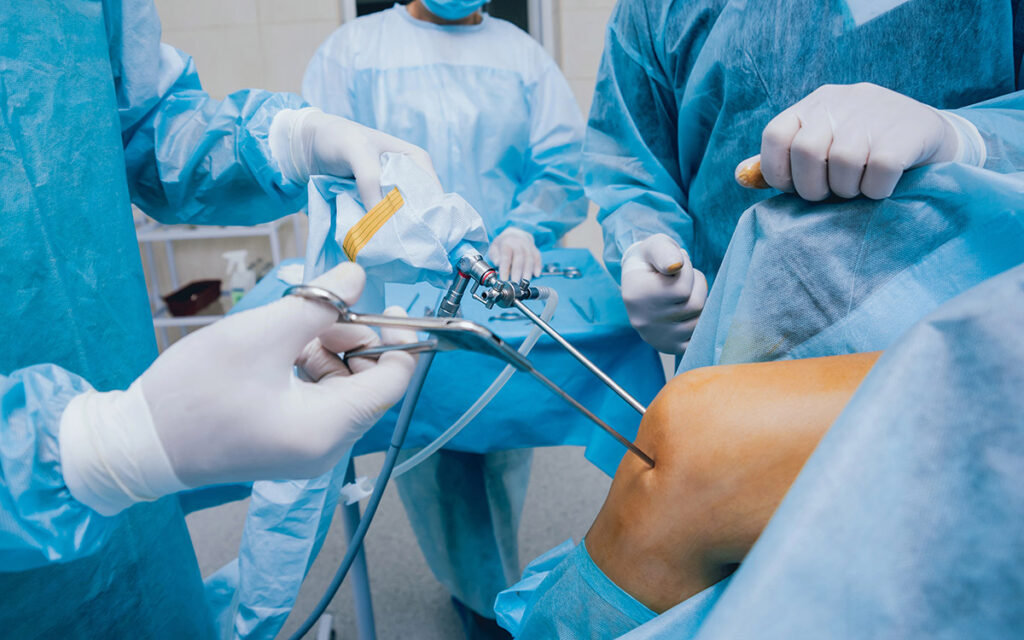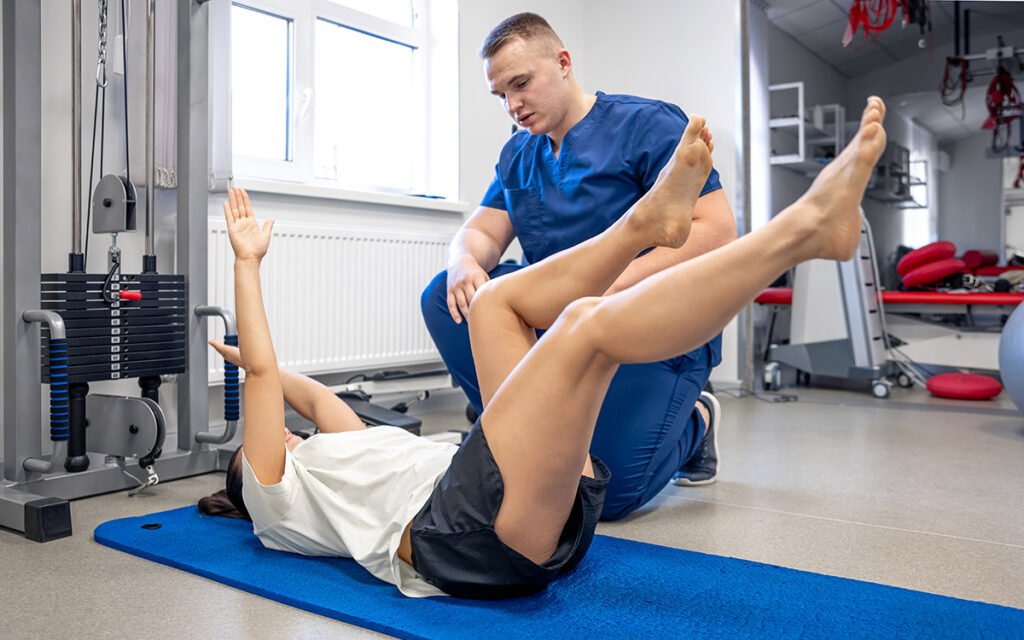Are you facing a possible surgery and feeling anxious about large incisions and a long recovery? Minimally invasive surgery, particularly arthroscopy, might be the answer you’re looking for. This technique has transformed the landscape of surgery, providing a less invasive alternative with significant benefits. This blog post will introduce you to arthroscopy, detail its procedures, and explain its advantages, helping you understand why it might be the preferred option for your orthopedic issues.
At Oak Tree Orthopedics, we’re committed to pioneering surgical techniques that minimize discomfort and speed up recovery. By the end of this read, you’ll gain a comprehensive insight into the world of arthroscopy.
1. What is Arthroscopy?
Arthroscopy is a surgical procedure that allows orthopedic surgeons to diagnose and treat joint issues with minimal disruption to the body. A small camera called an arthroscope is inserted through a tiny incision, providing a clear view of the inside of the joint on a high-definition video monitor. This allows the surgeon to perform the entire surgery through small tools with precision, which are also inserted through tiny incisions.
- Technology Behind Arthroscopy: The arthroscope transmits the image of the inside of the joint to a television screen, allowing the surgeon to use miniature surgical instruments to perform the procedure. This technology enables precise diagnosis and treatment with minimal surgical intervention.
- Commonly Treated Joints: This procedure is commonly used for knees, shoulders, elbows, ankles, and hips. It can address issues like torn cartilage, torn surface cartilage, and loose bone fragments.
2. Benefits of Minimally Invasive Surgery
Arthroscopy falls under the category of minimally invasive surgery, which means it is performed through small incisions instead of large ones used in traditional surgeries. This approach has several advantages:
- Less Post-Operative Pain: Smaller incisions mean less harm to the connective tissues, resulting in lower pain levels and reduced reliance on pain medications during recovery.
- Quicker Recovery Times: Patients typically experience faster healing times, with many returning to their daily activities weeks sooner than they would after traditional surgery.
- Reduced Risk of Infections and Complications: The small incisions reduce the exposure of internal tissues to potential external contaminants, which decreases the risk of infections.
3. The Arthroscopic Procedure Explained
Understanding what happens during an arthroscopic surgery can ease many concerns about the procedure:
- Pre-Operative Preparation: Patients may need to undergo various preoperative tests (such as blood tests and MRIs) to ensure safety during the surgery. Instructions might include fasting or temporarily stopping certain medications.
- During the Procedure: The surgery is typically performed under regional anesthesia, which numbs only the affected area, or general anesthesia. The surgeon makes small incisions to insert the arthroscope and surgical instruments into the joint. The real-time feed from the arthroscope guides the surgeon in repairing any damage.
- Post-Operative Care: Post-operative care is crucial for a successful recovery. This may include pain management strategies, physical therapy to restore movement, and instructions on how to care for the surgical site at home.
Conclusion:
Arthroscopy offers a minimally invasive alternative to traditional surgery, ideal for treating various joint issues with reduced pain and faster recovery. At Oak Tree Orthopedics, we specialize in advanced surgical techniques that prioritize your health and recovery. We encourage you to explore further and contact us with any questions or to schedule a consultation.
FAQ’s
What conditions can be treated with arthroscopy?
Conditions such as torn ligaments, damaged cartilage, and inflammation can be effectively treated with arthroscopy.
Is arthroscopy painful?
Patients generally experience less pain during and after arthroscopy compared to open surgery, due to smaller incisions and less tissue damage.
How long does recovery from arthroscopy take?
The recovery period can vary, but many patients start to resume light activities within a few days to weeks after surgery.
Who is a good candidate for arthroscopy?
Arthroscopy is suitable for individuals who have joint problems that do not respond well to non-surgical treatments but are in overall good health.









